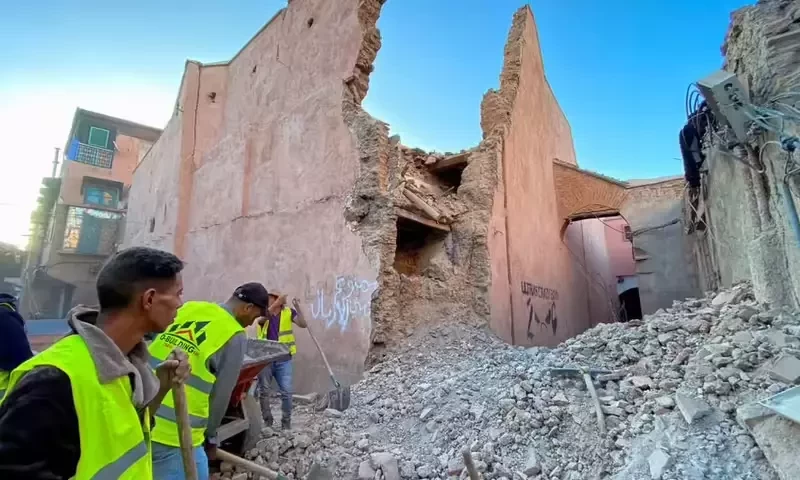Villagers wept for lost relatives in the rubble of their homes yesterday as the death toll from Morocco’s deadliest earthquake in more than six decades rose to almost 2,700 and rescuers raced against time to find survivors.
After a 6.8 magnitude earthquake occurred late on Friday in the High Atlas Mountains, with the epicentre 72 km (45 miles) southwest of Marrakech, search teams from Spain, Britain, and Qatar have joined Moroccan rescue efforts.
Africa Today News, New York reports that the death toll had risen to 2,681 with 2,501 people injured. Rescuers said the traditional mud brick houses ubiquitous in the region reduced the chances of finding survivors because they had crumbled.
Among the dead was 7-year-old Suleiman Aytnasr, whose mother had carried him to his bedroom after he fell asleep in the living room of their home in a hamlet outside Talat N’Yaaqoub, in one of the worst-hit areas. He had been about to start a new school year
“As she came back, the earthquake happened and the ceiling was destroyed and fell on him,” said Suleiman’s father, Brahim Aytnasr, whose eyes were red from crying. He had spent Monday trying to salvage items from the debris of his house.
Read Also: Race To Find Survivors As Morocco Quake Deaths Crosses 2000
Another son, 20-year-old Mouath, had escaped by climbing through a hole in the collapsed kitchen ceiling.
Footage from the remote village of Imi N’Tala, filmed by Spanish rescuer Antonio Nogales of the aid group Bomberos Unidos Sin Fronteras (United Firefighters Without Borders), showed men and dogs clambering over steep slopes covered in rubble.
“The level of destruction is … absolute,” said Nogales, struggling to find the right word to describe what he was seeing. “Not a single house has stayed upright.”
Despite the scale of the damage, he said rescuers searching with dogs still hoped to find survivors.
“I am sure that in the coming days, there will be some rescues. We think that there may still be people in the collapsed structures, that there may have been pockets of air, and as I say, we never give up hope,” he said.
After an initial response that was described as too slow by some survivors, search and rescue efforts appeared to be speeding up on Monday, with tent camps appearing in some locations where people were preparing for a fourth night outdoors.
A video filmed by Moroccan outlet 2M showed a military helicopter flying over an area close to the epicentre, dropping sacks of essential supplies to isolated families.
With much of the quake zone in hard-to-reach areas, the authorities have not issued any estimates for the number of people missing.
Roads blocked or obstructed by rocks that tumbled down the steep slopes during the quake have made it harder to access the worst-hit locations. Heavy machinery has been brought in to clear roads only for subsequent rockfalls to block them again.
The harm done to Morocco’s cultural heritage has been emerging gradually. Buildings in Marrakech Old City, a UNESCO World Heritage Site, were damaged. The quake also did major damage to the historically significant 12th-century Tinmel Mosque.
Residents in Tinmel, a remote village closer to the epicentre where 15 people were killed, said they had been sharing food, water, and medicine, but desperately needed tents and blankets to shelter from the cold mountain nights.
The mother of a 15-day-old child said she needed milk formula and medicine for her baby.
It was the North African country’s deadliest earthquake since 1960, when a tremor was estimated to have killed at least 12,000 people, and the most powerful since at least 1900, according to the U.S. Geological Survey.

